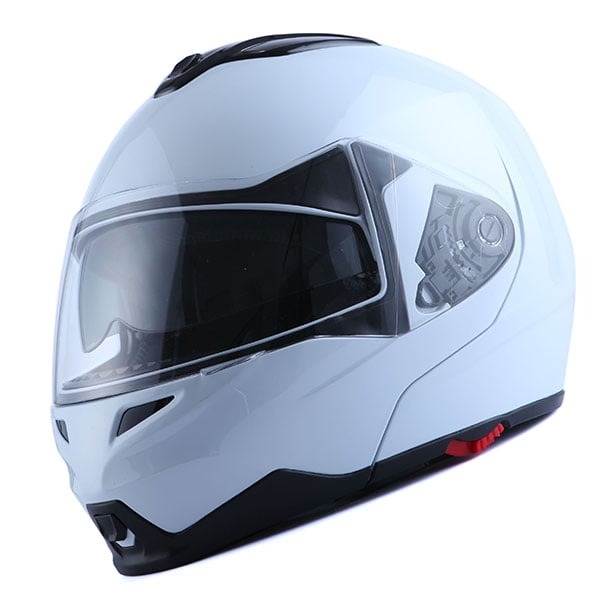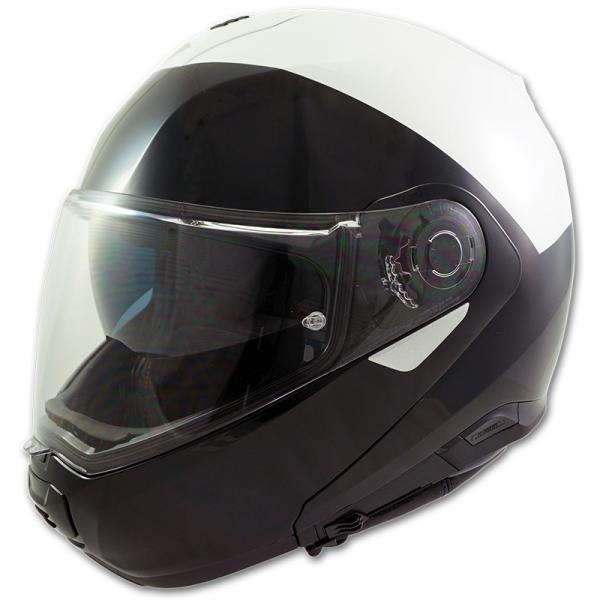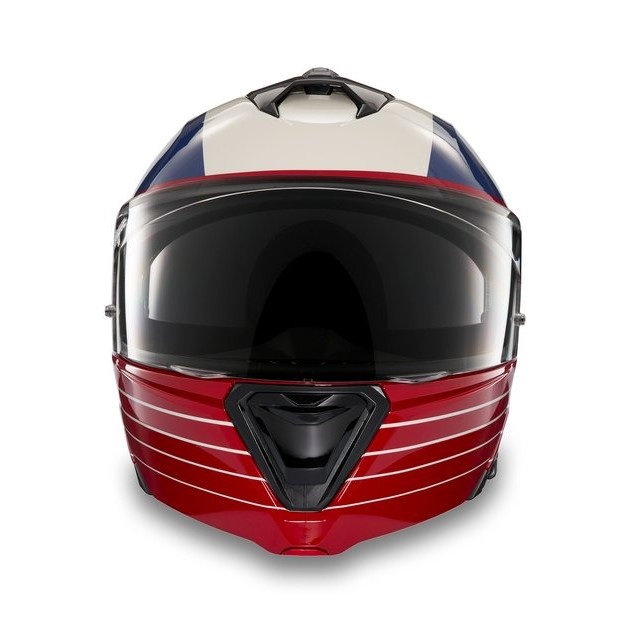Feb 5, 2025
Where to Get a Motorcycle Helmet: Your Essential Guide
Types of Motorcycle Helmets
Choosing the right type of motorcycle helmet is crucial for your safety, comfort, and riding experience. Here’s a breakdown of the various types of helmets you can consider.
Full-Face Helmets
Full-face helmets offer the best all-around head protection because they cover your entire head and face. The visor shields your eyes from debris and the solid chin bar protects your jaw in an accident. These helmets are ideal for high-speed riding and for those looking for maximum protection.
Open-Face Helmets
Open-face helmets cover the top and back of your head but leave the face exposed. They offer more visibility and airflow, which is great for city riders or those riding in hot weather. However, they provide less protection compared to full-face options.
Modular Helmets
Modular helmets combine the benefits of full-face and open-face helmets. They have a chin bar that can be flipped up, offering versatility. When closed, they resemble full-face helmets; when open, they offer the comfort of an open-face helmet. They are popular among tourers and adventure riders.
Off-Road Helmets
Specifically designed for dirt biking and motocross, off-road helmets are lightweight and provide superior ventilation. They lack a visor but have an elongated chin and visor portion, which allows for the use of goggles and better airflow.
Dual-Sport Helmets
Dual-sport helmets blend features from off-road and full-face helmets, making them suitable for both on-road and off-road adventures. They have visors and space for goggles, offer robust protection, and are designed to be aerodynamic at highway speeds.
Remember, when figuring out where to get a motorcycle helmet, it’s important to consider these types and find one that suits your riding style and preferences. Specialty motorcycle shops and online retailers are common places to find all these types of helmets. Stay tuned for insights on understanding helmet safety standards.
Understanding Helmet Safety Standards

When you’re figuring out where to get a motorcycle helmet, safety should be your top priority. Different safety standards apply to motorcycle helmets, and knowing them helps ensure you’re getting a helmet that can protect you effectively. Here, we will dive into the most recognized safety certifications.
DOT Certification
The Department of Transportation (DOT) certification is a mandatory standard in the United States. Look for a DOT sticker on the back of the helmet. This means it has undergone impact testing, penetration testing, and has a retention system to stay securely fastened. Always ensure the helmet meets DOT standards before purchasing.
ECE Certification
The Economic Commission for Europe (ECE) certification is widely accepted in over 50 countries. Similar to DOT, ECE-certified helmets undergo rigorous testing, including energy absorption, roll-off prevention, and rigidity. An ECE sticker indicates it has passed these tests.
Snell Certification
Snell certification involves even more demanding testing criteria and is voluntary. If a helmet boasts a Snell certification, it means it has passed stringent impact tests at fixed and random points. It is a mark of superior safety that racing organizations often require.
Choosing a motorcycle helmet with these certifications can significantly increase your safety on the road. As you consider where to get a motorcycle helmet, keep these standards in mind to make a well-informed decision.
Factors to Consider When Choosing a Helmet
When deciding where to get a motorcycle helmet, several key factors should guide your choice. These factors are critical for ensuring both safety and a comfortable riding experience.
Fit and Comfort
A properly fitting helmet is the foundation of helmet safety. Take the time to measure your head. Make sure the helmet sits snugly on your head without causing discomfort. Check for any pressure points that may cause pain during long rides. Look for helmets with adjustable straps and padding for a better fit.
Helmet Weight
A heavy helmet can strain your neck over time. Lightweight helmets reduce fatigue and can be more comfortable on long journeys. Nonetheless, the helmet should also have a sturdy construction to ensure safety.
Visibility
Your field of view is vital while riding. Choose a helmet with a wide visor to prevent blind spots. Ensure the visor is clear and free of distortions. Some helmets also offer tinted or interchangeable visors for different riding conditions.
Ventilation
Good airflow is crucial, especially in warmer climates. Helmets with multiple air vents allow for better circulation, keeping you cool and reducing visor fog. The ability to open and close vents can adapt ventilation to changing weather conditions.
Consider these factors carefully to ensure that where you get a motorcycle helmet, it serves your needs perfectly. In the following sections, we will explore where to purchase them and what features to look for.
Where to Purchase Motorcycle Helmets

Finding the right place where to get a motorcycle helmet can be just as important as selecting the helmet itself. You want a reliable source that offers quality, selection, and knowledgeable service. Let’s look at the best places to purchase a motorcycle helmet.
Specialty Motorcycle Shops
Visit specialty motorcycle shops for personalized service. Staff often know their products well and can help with fittings. Shops usually carry the latest models and safety gear. You can touch, wear, and test different helmets before buying. They may also offer fitting services to ensure the best comfort and safety.
Online Retailers
Online stores provide a broad range of brands and styles. They often have reviews from other riders, which can guide your choice. Comparing prices is easier online, and deals are common. However, ensure you know your size before ordering to avoid returns. Look for reputable sites with good customer service and return policies.
Second-Hand Options
Buying second-hand can save money, but be cautious. Check the helmet’s condition thoroughly. Look for any signs of wear, damage, or past impacts. Avoid helmets that are too old or have been in a crash. It’s essential to prioritize safety over cost when considering a second-hand helmet.
Features to Look For in a Helmet
When you’re on the quest for where to get a motorcycle helmet, don’t overlook the features that can enhance your riding experience. The right features in a helmet can greatly impact your comfort, convenience, and safety. Below is a list of essential features you should consider.
Visor Options
A good visor shields your eyes from the sun, wind, and debris. Look for helmets with:
- Anti-fog technology to maintain clear vision.
- Scratch resistance to prolong visor clarity and life span.
- UV protection to shield your eyes on sunny rides.
- Quick-release systems for easy visor swaps.
Consider helmets with visor options that suit different lighting conditions like clear, tinted, or photochromic visors.
Bluetooth and Tech Features
Modern helmets can have built-in Bluetooth systems. These allow for:
- Hands-free calls to stay connected.
- Easy GPS navigation to find your way.
- Music and audio streaming for entertainment.
Pick a helmet with integrated tech if you want these conveniences while keeping focus on the ride.
Removable Linings
For hygiene and comfort, select helmets with:
- Removable and washable liners to keep the helmet fresh.
- Antibacterial fabric to reduce odor build-up.
- Adjustable pads for a better fit and comfort.
Helmets with removable linings are easier to clean and can be adjusted for seasonal riding gear changes.
The Importance of Proper Helmet Maintenance
Keeping your motorcycle helmet in top condition is vital for safety and longevity. Maintaining your helmet ensures it performs at its best when you need it. Regular maintenance keeps the helmet clean, comfortable, and functional. Here’s what to focus on to maintain your helmet properly.
Cleaning Your Helmet
Clean your helmet regularly to remove dirt, bugs, and sweat. Use mild soap and water for the exterior shell. Avoid harsh chemicals that can damage the helmet materials. For the interior, remove the linings if possible and wash them according to the manufacturer’s instructions. A clean helmet means clearer vision and reduced skin irritation.
Always dry your helmet naturally, away from direct sunlight. Wiping the visor with a soft cloth prevents scratches and maintains clarity. If your helmet has a ventilation system, ensure the vents are clear of debris for optimal airflow.
When to Replace Your Helmet
Helmets have a lifespan and should be replaced after a significant impact or every few years. Check the helmet’s production date. Most manufacturers recommend replacing helmets every 5 years, even if they look intact. The materials degrade over time, reducing the helmet’s protective abilities.
Watch out for signs of wear such as loose padding, fraying straps, or a compromised shell. These are indicators that it’s time for a new helmet. Finding where to get a motorcycle helmet that’s up-to-date on safety standards is crucial for continued protection.
In conclusion, proper helmet maintenance is not just about cleaning; it’s also about knowing when it’s safer to replace your gear. Make safety a priority and keep your helmet in check.
Tips for Trying on Helmets

When searching for where to get a motorcycle helmet, the trying-on process is critical. Ensuring a helmet fits correctly is as essential as the helmet’s safety features. Here’s how to do it right.
Measuring Your Head
Start by measuring your head. Use a soft tape measure and wrap it around the widest part of your head, about an inch above your eyebrows. Make note of the measurement and compare it with the helmet manufacturer’s sizing chart. Helmets come in various shapes and sizes, so make sure you know your head’s circumference to find the perfect fit.
Checking for Pressure Points
Once you’ve found a helmet that seems to fit your head size, check for pressure points. Put the helmet on and secure it. Wear it for a few minutes to ensure no pressure points cause discomfort. Typical areas to check are the forehead and temples. If you feel consistent pressure in these areas, the helmet may be too tight. A correctly sized helmet will feel snug but not painful. Remember, a helmet that fits well will provide better protection and a more enjoyable ride.
Trying on helmets requires patience and attention to detail. Visit stores where you can get a motorcycle helmet and take the time to try on different makes and models. A well-fitting helmet not only maximizes safety but also enhances the overall riding experience. Keep these tips in mind during your search, and prioritize a proper fit for ultimate protection.
More Details